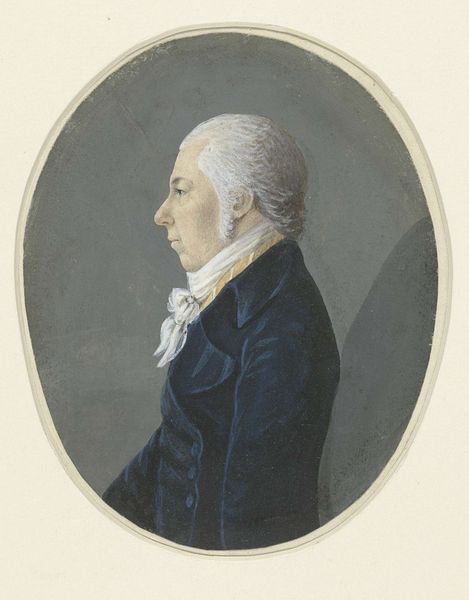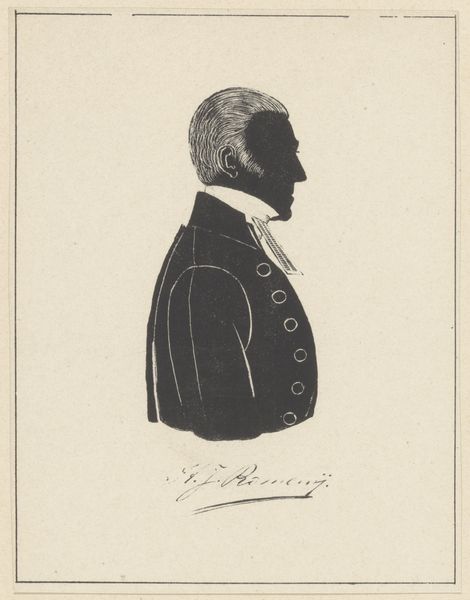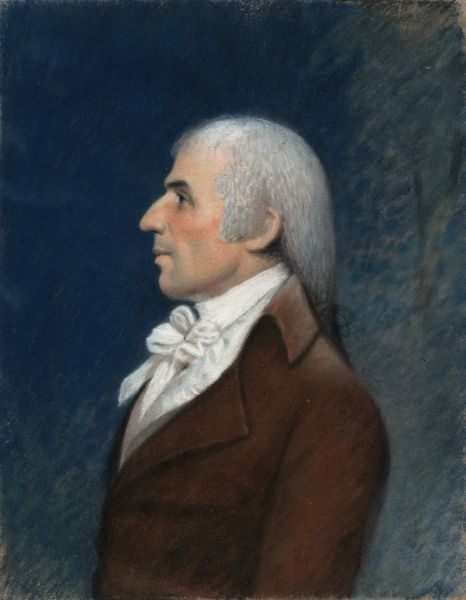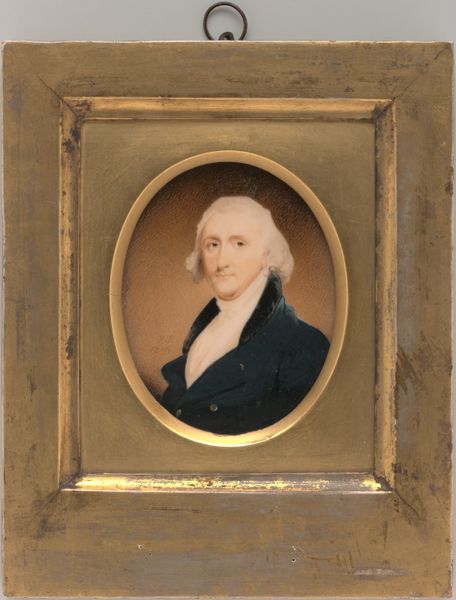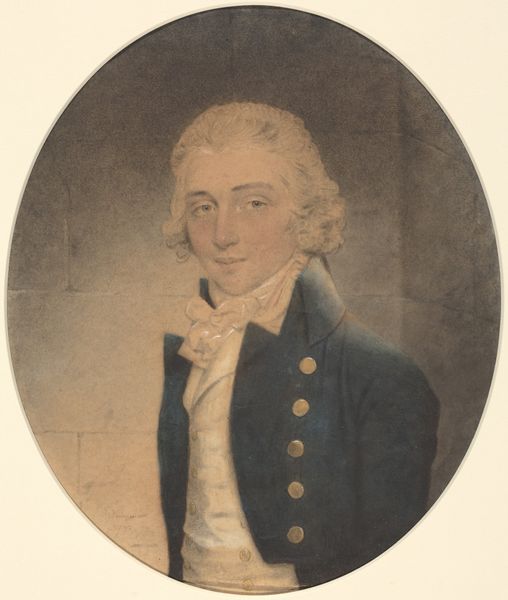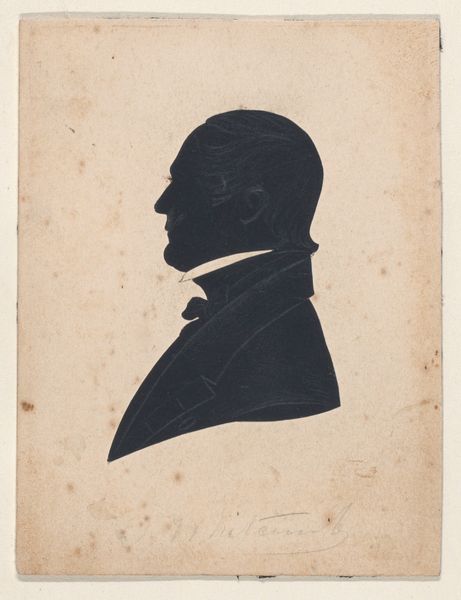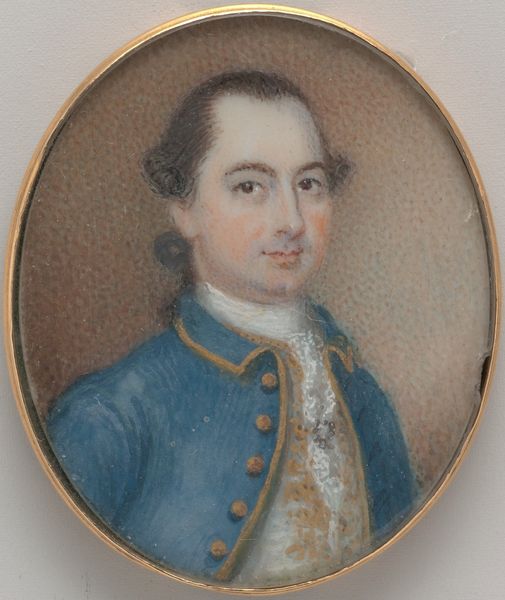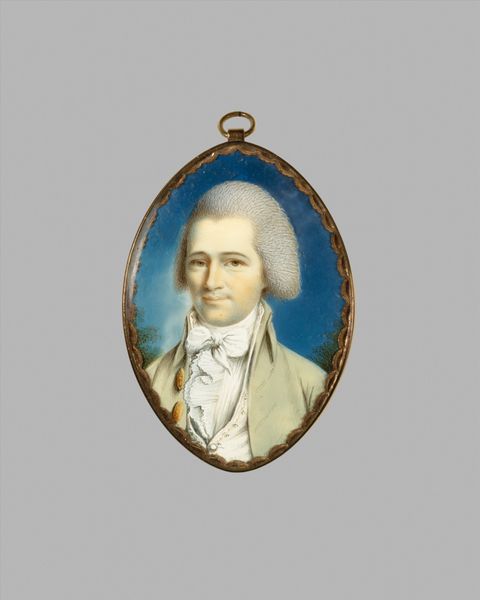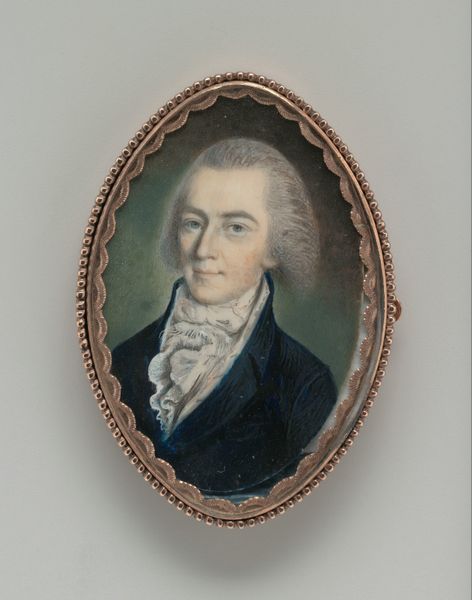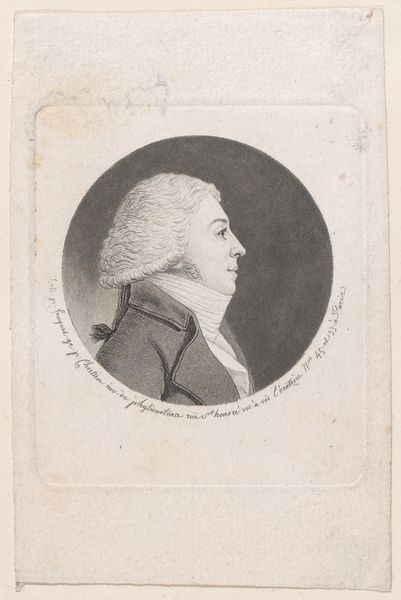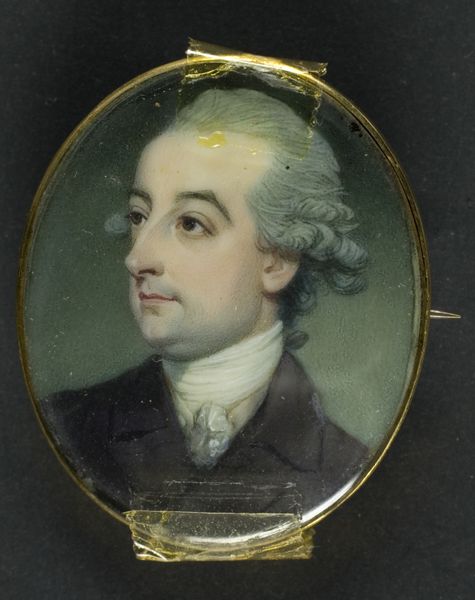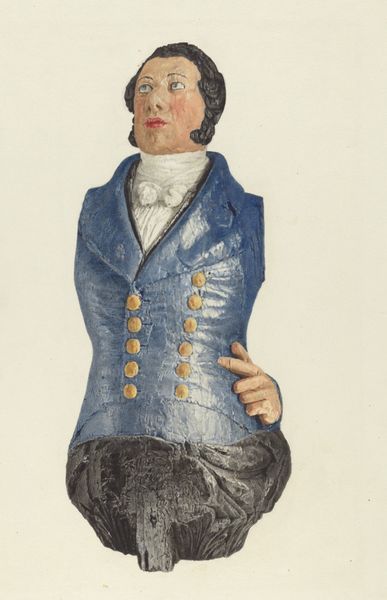
drawing, watercolor
#
portrait
#
drawing
#
caricature
#
watercolor
#
romanticism
#
portrait drawing
#
watercolor
Dimensions: overall (irregular): 24.92 × 20.16 cm (9 13/16 × 7 15/16 in.)
Copyright: National Gallery of Art: CC0 1.0
Curator: A somber study in blues and whites, isn't it? Almost monochromatic, lending a feeling of stark formality to the subject. Editor: Indeed. This is James Sharples’s rendering of “Thomas Peyton,” estimated to have been completed sometime between 1779 and 1811, an intriguing period bridging late colonialism and early republicanism. It's executed in watercolor. Curator: Notice the almost porcelain quality of the skin tones, a softness that contrasts so dramatically with the crisp lines of the jacket and collar. It draws the eye inexorably to the subject's face, almost like a study in geometric contrasts. Editor: And those contrasts speak volumes. Peyton’s fashionable attire—the high collar, the meticulously styled hair—underscores a societal performance, a constructed image meant to project authority and belonging to a specific class. The piece suggests much about the early Federal period. Curator: Yet there's something about the slightly out-of-focus background, that wash of deep blues, that almost feels… unresolved? The artist may have intended the background as subordinate to the profile, or it might be an indicator of further completion still yet to be done in the painting. Editor: Or perhaps it represents the very uncertainties of that era. The shift from British subject to American citizen, a re-evaluation of societal structures— Sharples was a portraitist documenting this epoch, giving us insight into its leaders, thinkers, and affluent elite. Curator: Do you think the somewhat detached expression is intended? Or maybe just a characteristic approach to portraiture from the romantic era? Editor: Portraits were, then and now, tools to craft narratives. Peyton may very well have commissioned this with particular audiences and legacy-building in mind. This was also an interesting time period in terms of economics. So wealth and family status must certainly play a role. Curator: It is fascinating how an ostensibly simple watercolor painting could contain so many cultural inferences, wouldn’t you agree? Editor: Precisely, these portraits become a crucial record of a generation forging a nation's identity. Each brushstroke and shade offers clues to a complex historical moment.
Comments
No comments
Be the first to comment and join the conversation on the ultimate creative platform.

